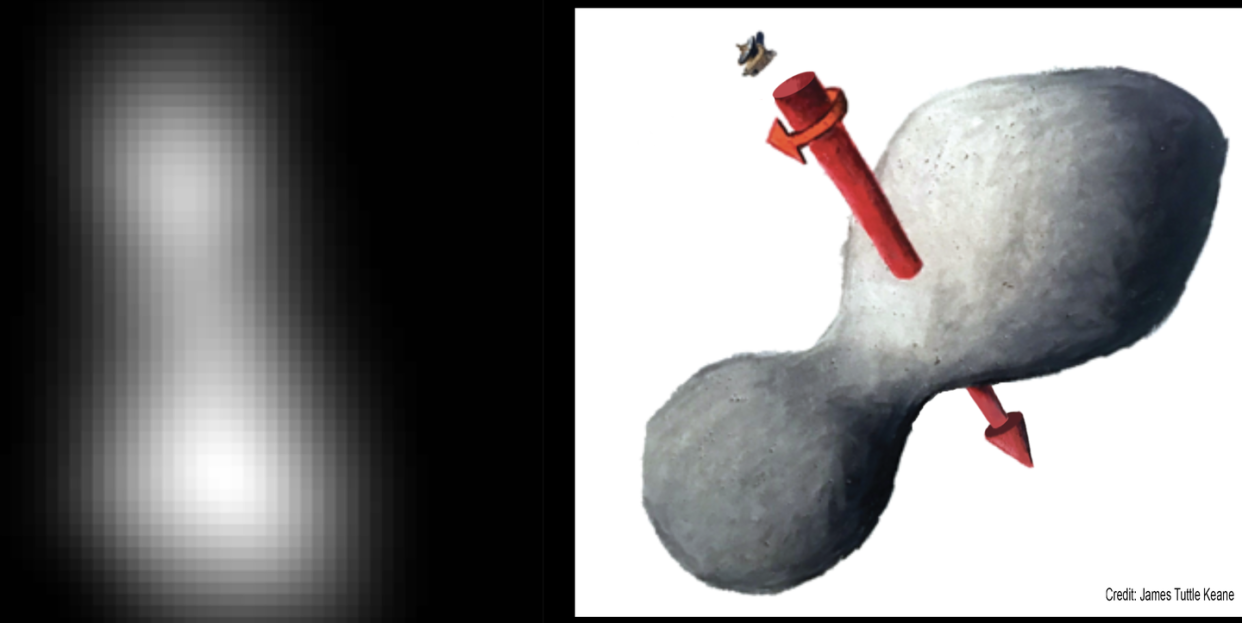Here Is the First Image from New Horizons' Ultima Thule Flyby

On New Year’s Day, when everyone was celebrating-or recovering from celebrating-NASA’s New Horizons accomplished something incredible. The spacecraft flew past Ultima Thule, a small asteroid on the outer edge of the solar system. At 12:33 a.m. Eastern on January 1, New Horizons passed just 2,200 miles from its target.
This is the second time New Horizons has managed a delicate flyby of a distant solar system target. The first, of course, was its historic visit to Pluto in 2015. That flyby produced some incredible images of a strange, distant world that no humans had ever seen before.
The images we have of Ultima Thule are not quite as remarkable-yet. That's because the high-resolution images from the close flyby will take a while to arrive. For now all we have is a pixelated white blob. That blob is still pretty interesting, however, because it confirms something scientists have suspected of the asteroid for a while now: We might actually be looking at two asteroids.
It’s still too early to tell the exact shape of the asteroid, but the vague appearance of Ultima Thule suggests it’s particularly skinny in the middle and wider at the ends. That could mean it’s really two asteroids, or it could mean Ultima Thule is just an especially weird-shaped single asteroid.
This first image also solves a recent mystery that astronomers discovered when approaching Ultima Thule. A few weeks ago, they noticed the asteroid didn’t have a light curve, meaning it wasn’t getting periodically dimmer and brighter like most asteroids do. If Ultima Thule was so oddly-shaped, it should change brightness when it rotated to point more toward New Horizons.
Scientists proposed a number of possible reasons for why the asteroid had no light curve, and now we know the true reason: New Horizons has been approaching Ultima Thule right along one of the asteroid’s poles. That means Ultima Thule has been pointing the same side toward New Horizons for the past few months, explaining why it has always looked the same.
Rotation of 2014 MU69 pic.twitter.com/REHHnqPnCy
- Emily Lakdawalla (@elakdawalla) January 1, 2019
Starting this year, however, New Horizons has gotten a new look at Ultima Thule from the other side. Those images are taking some time to travel all the way from the edge of the solar system, but we should expect some high-res imagery later today. The pictures will finally give us a real look at this strange world and should answer nearly all of our questions, along with giving us plenty of new ones to consider.
('You Might Also Like',)

